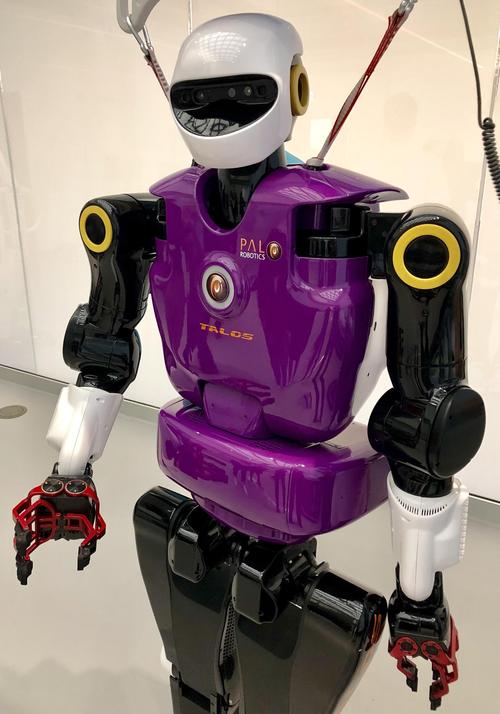The latest addition to the RoboHub, a new, state-of-the-art robotics facility at Waterloo Engineering, took its first tentative but impressive steps during an impromptu demonstration this week.
A full-size, electric, humanoid robot capable of seeing, hearing and feeling the world around it via sensors, it also shuffled sideways, waved and took a bow as students stopped to shoot videos with their smartphones through the glass walls.
A full-size humanoid robot, TALOS has arrived at the state-of-the-art RoboHub in Engineering 7.

Exploring everything else it can do, especially in industrial settings, is now up to researchers happy to have one of the most sophisticated robots of its kind to work with.
“This robot can pick up a human tool, work in a human environment, and do the dull, dirty, dangerous tasks that people no longer want or need to do,” said Brandon DeHart, an engineering PhD candidate who manages the RoboHub.
TALOS, manufactured by PAL Robotics of Spain, is one of just a handful of full-size, humanoid robots in the world that can operate based primarily on the forces it creates, rather than the positions of its joints.
The only one that is commercially available, it is worth well over $1 million. Waterloo has the fourth TALOS made to date and the only one outside of Europe.
Standing 175 centimetres tall and weighing in at 95 kilograms, the mostly black and purple robot cuts an imposing figure.
It is strong enough to jump and has 32 motors to control the 32 different ways it can move, including seven in each arm and six in each leg.
But what really makes TALOS special is its ability to sense both the forces it exerts and the forces exerted on it, a key to limiting accidents and ensuring safety when operating around people.
Sensing force means it can negotiate the subtle push and pull of carrying a table with a person, maintain its balance well enough to climb stairs and perform assembly tasks requiring relatively fine motor skills.
'Capabilities much closer to those of humans'
A standard, position-based robot placing pegs in holes, for instance, would stubbornly push against the surface with increasing force if the holes somehow moved slightly. TALOS would be able to feel around, make adjustments and find the holes again without damaging itself, the peg or its environment.
“If you have proper sensing and proper force control, a robot can perform those tasks,” said DeHart. “It can do much more useful work with capabilities much closer to those of humans.”
To get the exploration started, members of the research team needed a medical lift to carefully hoist TALOS out of a big black case it arrived in from Spain last week.
Next on the to-do list, the first of many anticipated advances and refinements, is taking a shake out of its arms when it walks.
Located on the ground floor of the new Engineering 7 building, the two-storey RoboHub was designed for research and testing of multi-robot teams using a fleet of humanoid, aerial, ground and magnetically-levitated robots.
This article originally appeared on Waterloo Engineering News.